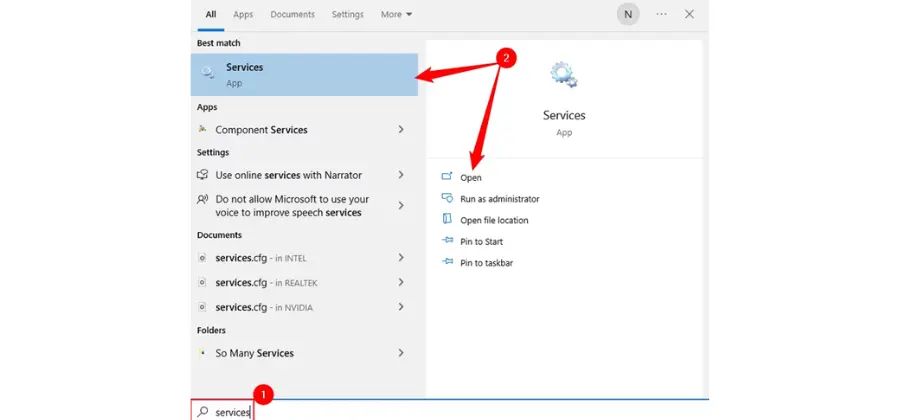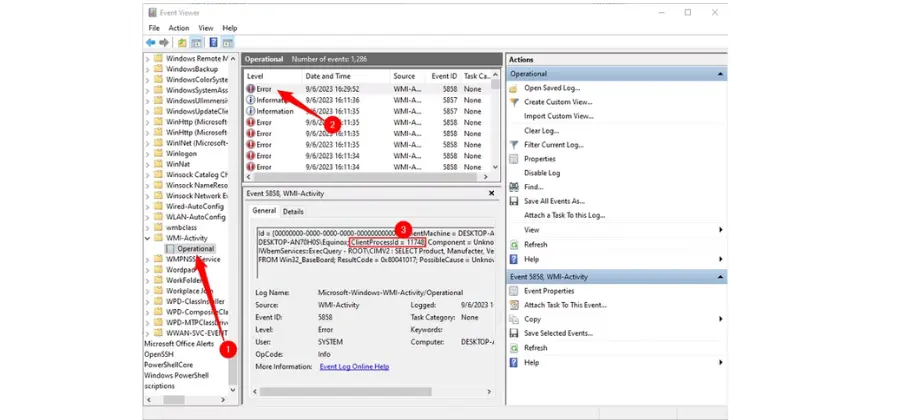Windows
What Is the WMI Provider Host (WmiPrvSE.exe), and Why Is It Using So Much CPU?
The WMI Provider Host process is an important part of Windows, and often runs in the background. It allows other applications on your computer to request information about your system. This process shouldn’t normally use many system resources, but it may use a lot of CPU if another process on your system is behaving badly.
What Is WMI Provider Host?
“WMI” stands for “Windows Management Instrumentation,” a feature in Windows that facilitates standardized information retrieval about the state of the operating system and its data through software and administrative scripts. When requested, “WMI Providers” supply this data, enabling applications to access details like BitLocker encryption status, event log entries, or information from installed applications equipped with a WMI provider. Microsoft maintains a catalog of included WMI providers online.
This feature is particularly valuable for enterprises managing PCs centrally, allowing script-based information retrieval displayed uniformly in administrative consoles. Even on personal computers, installed software may utilize WMI for system information requests.

Individual users can also leverage WMI to access various useful data not typically accessible through the standard Windows interface. For instance, the WMI Command-line tool (WMIC) can retrieve a PC’s serial number, motherboard model, or monitor the SMART health status of hard drives.
It’s important to note that WMI itself is not malicious, and instances of viruses impersonating WMI are rare.
Why Is WMI Provider Host Using So Much CPU?
The WMI Provider Host typically operates with minimal CPU usage when it’s not actively processing requests. It may temporarily spike in CPU usage when other software or scripts on your computer query information via WMI, which is normal behavior. Continuous high CPU usage, however, signals an issue since WMI Provider Host shouldn’t consistently consume significant CPU resources.
To resolve high CPU usage, restarting the Windows Management Instrumentation service can help if it’s stuck or encountering problems. Instead of rebooting your computer, you can restart the service directly by accessing the Services tool: launch it by typing “Services.msc” in the Start menu, locating “Windows Management Instrumentation service,” right-clicking it, and selecting “Restart.”
If CPU usage remains persistently high, another process on your system may be misbehaving by constantly requesting extensive data from WMI providers. To pinpoint the problematic process, you can use the Event Viewer:
- Open Event Viewer (on Windows 10 or 11, right-click Start and select “Event Viewer”; on Windows 7, type “Eventvwr.msc” in the Start menu).
- Navigate to Applications and Service Logs\Microsoft\Windows\WMI-Activity\Operational.
- Look for recent “Error” events and note down the number next to “ClientProcessId” in the details pane, which identifies the process causing the WMI error.
To identify the specific process:
- Open Task Manager (Ctrl+Shift+Escape), switch to the “Details” tab, and click on the “PID” column to sort processes by Process ID.

- Locate the process matching the ID number from the Event Viewer logs.

For instance, if an error tied to PID 3880 in Event Viewer relates to a software like “Noise Cancelling Engine” from ASUS, you can investigate further. Note that process IDs can change if a program closes and reopens, so focus on recent events.
With this information, you can search online to understand the software associated with the problematic process. You may need to update or uninstall the software to resolve the high CPU usage caused by excessive WMI requests.

By following these steps, you can effectively troubleshoot and address issues related to WMI Provider Host’s CPU usage on your system.

Can I Disable WMI Provider Host?
It is technically possible to disable the “Windows Management Instrumentation service” on your computer. However, this will break many different things on your PC. It’s an important part of the Windows operating system and should be left alone.
As the official description for this service says, “If this service is stopped, most Windows-based software will not function properly”. So don’t disable this service! If you have a problem with it, you need to identify the process on your computer that’s causing the WMI Provider Host to use so much CPU and update, remove, or disable that process instead.

-
Whatsapp12 months ago
YoWhatsApp Apk v9.74 Latest Version Download for Android (Yousef) 2023
-
Tech2 months ago
How to Remove AI From Your Google Search Results
-
Whatsapp12 months ago
Download GBWhatsApp Pro APK v17.51 Latest Version (Official) AUGUST 2023 [Anti-Ban]
-
Blog2 months ago
Immune Boosters: Harnessing the Power of Peels for Vitality
-
Tech2 months ago
How to Use Google’s Circle to Search AI Feature to Quickly Look Up Text, Images
-
Whatsapp12 months ago
WhatsApp Plus APK Download Latest (Updated) v17.40 Official Anti-Ban 2023
-
Blog2 months ago
wellhealthorganic.com/how-to-build-muscle-know-tips-to-increase-muscles
-
Whatsapp12 months ago
Fouad WhatsApp APK Download Latest Version 2023 v9.74















